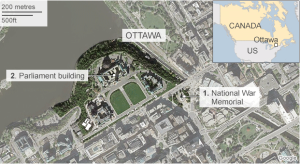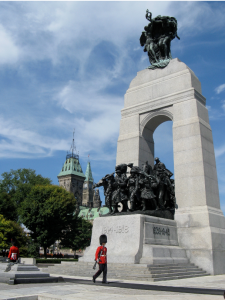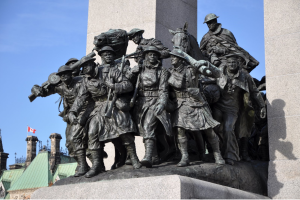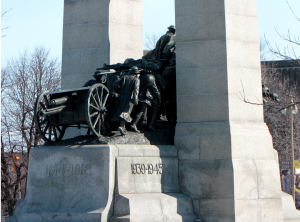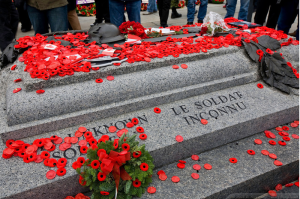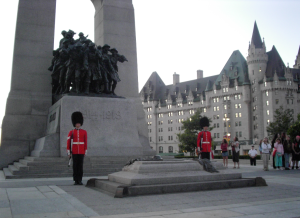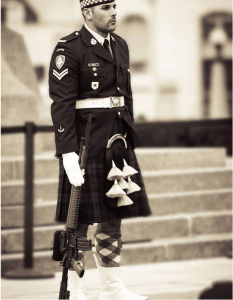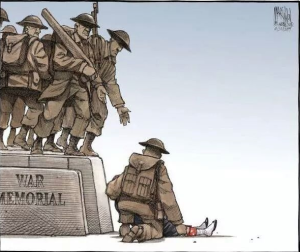This past week MIchael Zehaf-Bibeau, a Canadian born Muslim, stormed Parliament Hill in Ottawa with a Winchester lever action rifle. The attack began with the murder of Corporal Nathan Cirillo who was on ceremonial guard duty at Canada’s National War Memorial. The gunman then hijacked a car and sped towards the Parliament Building where he abandoned the car and ran into the central portion of the building called the Center Block. It all ended in a hail of gunfire inside the building where the Parliamentary Sargeant-at-Arms, Kevin Vickers, himself a retired Royal Canadian Mounted Police Officer, killed Zehaf-Bibeau and ended the incident.
Canada’s National War Memorial is the equivalent in the US to a combined version of the Tomb of the Unknown Soldier and the Iwo Jima Memorial.
Many years ago I was a student taking 7 years to complete a 4 year Engineering degree at the University of Saskatchewan. One of the reasons for my extended life on campus was that I spent a year as the Chairman of a national student organization called the Canadian Federation of Student Services. I spent quite a bit of time in Ottawa and one day wandered over to see the National War Memorial.
Canada’s National War Memorial
The government sought designs for the memorial in 1925 to commemorate Canada’s role in WW1. The memorial was officially unveiled just a few months before the start of WW2 by King George VI, in May of 1939. Nearly 100,000 people attended the unveiling from across the country at a time when the entire population of Ottawa was just 140,000.
The two towers on each side represent peace and freedom below which 22 Canadian servicemen are depicted in bronze. At the front of the memorial are infantrymen including a Lewis Gunner on the far left and a solider wearing a kilt and carrying a Vickers machine gun on the far right. Others include an infantryman, a pilot in full flying gear, a sailor and a mechanic. Behind the front group are a artilleryman mounted on a horse which is pulling a gun carriage (seen at the back of the monument). Behind them are the men and women who supported the front including nurses, stretcher bearers and also a lumberman. There was good reason to include the lumberman. Much of WW1 was fought in trenches which required immense amounts of wood to reinforce the walls of the trenches. More wood was used in efforts to tunnel beneath the enemies trenches and even more wood was used for tunnels behind the lines so that supplies and men could be brought to the front below ground, out of the line of fire of enemy artillery.
Canada’s Unknown Soldier, who died while fighting in France in 1917 and buried in France, was exhumed and reinterred at the base of the memorial just 14 years ago, in 2000.
The Unknown Soldier was selected from a cemetery located near Vimy Ridge. For Canadians, the victory at Vimy Ridge in April of 1917 carries much national significance. For the first time during the war, all 4 Canadian Divisions fought together to defeat the Germans. Suffering some 10,000 casualties, Canadians view the victory as a “coming of age” for the country. One of Canada’s most famous authors, Pierre Burton said of Vimy, “Canada became a country in 1867, she became a nation at Vimy Ridge”.
So it was at THIS place last week that Zehaf-Bibeau murdered Nathan Cirillo. It was bad enough that the murderer had killed an unarmed soldier just a few days after a similar incident where another unarmed soldier was run down by another Islamic Extremist in Quebec. . But to do so while while the soldier was guarding Canada’s National War Memorial just seemed to make it worse.
Cpl. on Guard in uniform
Cpl Cirillo of the Argyll and Sutherland Highlanders of Canada was was shot twice at close range. A number of people passing by came to his aid including other members of the military who were part of the honor guard as well as a nurse and a few others including an attorney named Barbara Winters.
Ms. Winters was interviewed the day after the attack by Carol Off of CBC Radio:
Bruce MacKinnon, an Editorial Cartoonist with the Halifax Chronicle memorialized the event which has struck a chord with Canadians across the country.
One of the soldiers on the memorial has descended down to the ground to try to assist Cpl. Cirillo while another on the memorial seems to be reaching down to assist in pulling his newly fallen comrade up onto the memorial itself.
RIP Nathan Cirillo. May your soul be bound up in the body of life.
